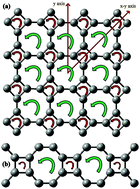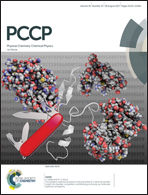Optical properties and magnetic flux-induced electronic band tuning of a T-graphene sheet and nanoribbon
Abstract
Tetragonal graphene (T-graphene) is a theoretically proposed dynamically stable, metallic allotrope of graphene. In this theoretical investigation, a tight binding (TB) model is used to unravel the metal to semiconductor transition of this 2D sheet under the influence of an external magnetic flux. In addition, the environment under which the sheet exposes an appreciable direct band gap of 1.41 ± 0.01 eV is examined. Similarly, the electronic band structure of the narrowest armchair T-graphene nanoribbon (NATGNR) also gets modified with different combinations of magnetic fluxes through the elementary rings. The band tuning parameters are critically identified for both systems. It is observed that the induced band gaps vary remarkably with the tuning parameters. We have also introduced an exact analytical approach to address the band structure of the NATGNR in the absence of any magnetic flux. Finally, the optical properties of the sheet and NATGNR are also critically analysed for both parallel and perpendicular polarizations with the help of density functional theory (DFT). Our study predicts that this material and its nanoribbons can be used in optoelectronic devices.



 Please wait while we load your content...
Please wait while we load your content...